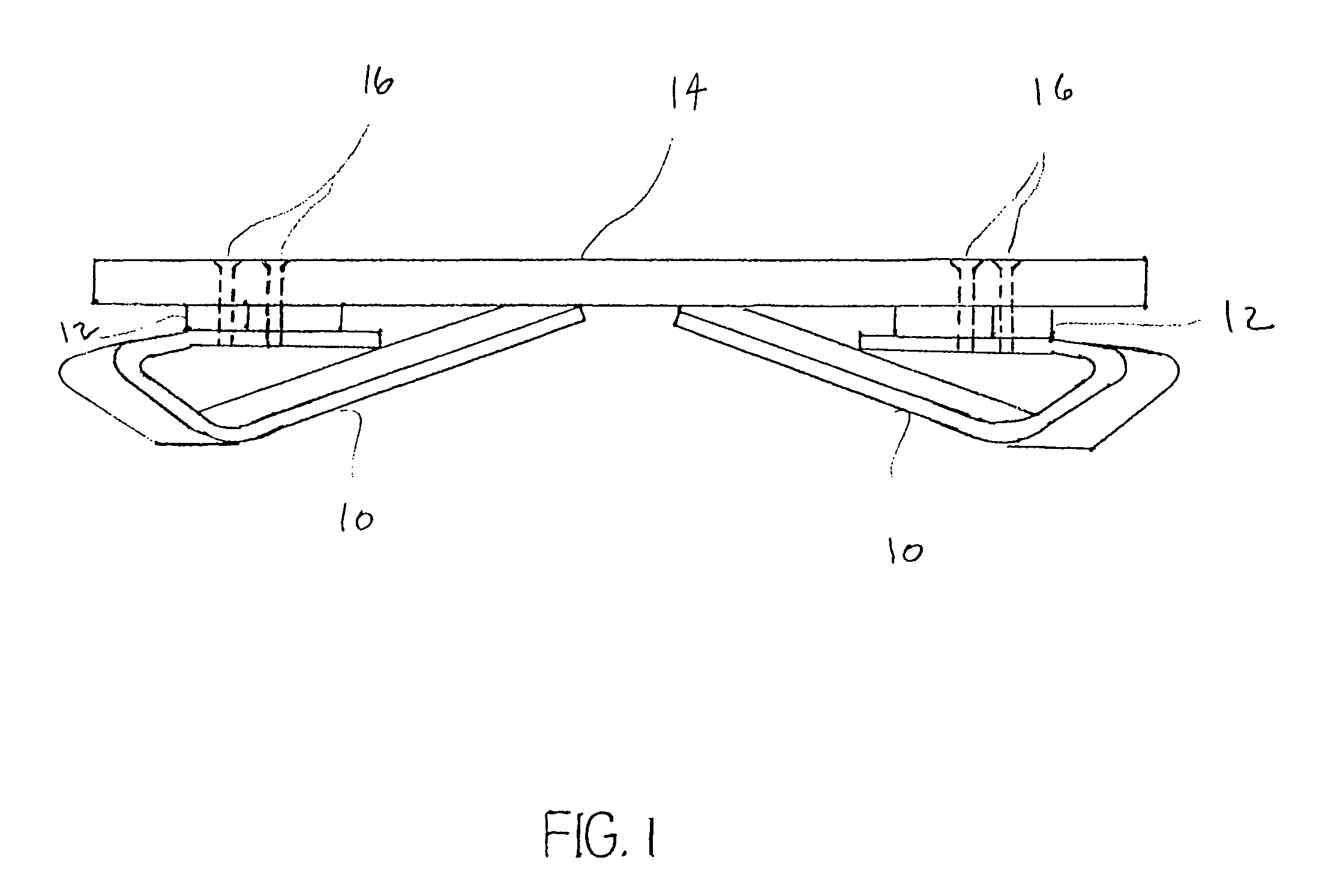Flex-i-board
a technology applied in the field of counter-top cutting and chopping boards, can solve the problems of insignificant countertop vibration, difficult positioning of boards and stability, and significant amount of vibration (and consequent noise) transmitted, and achieve the effect of positioning boards and stability
- Summary
- Abstract
- Description
- Claims
- Application Information
AI Technical Summary
Benefits of technology
Problems solved by technology
Method used
Image
Examples
embodiment 1
[0045]Additional embodiment 1, is shown in FIGS. 7A and 7B. About 300 mm (12 inch) of an approximately 300 mm by 600 mm (12 inch by 24 inch) or larger, piece of polypropylene or other appropriate plastic, is cut into five 125 mm (1.2 inch) strips. Each, of the strips, is alternately, heat bent into a wavy pattern as illustrated in FIG. 7A. The alternating wavy stripes section is heat bent approximately 180 degrees. This section serves as the compressible “legs”10 for the top section, which serves as the cutting-chopping board surface 14.
embodiment 2
[0046]Additional embodiment 2, is shown in FIGS. 8A and 8B. A 300 mm (12 inch) by 600 mm (24 inch) or proportionally larger piece of polypropylene or other appropriate plastic is heat bent approximately 190 degrees at both ends with both extension arms (legs 10) pressing against the lower surface of the cutting-chopping board surface as illustrated. Cleaver impact on the surface of the board 14 would be countered by the resistance of compressing each of the circular ends and the upward forces exerted by each of the extension arms (legs 10) on the lower surface of the cutting board.
embodiment 3
[0047]Additional embodiment 3, illustrated in FIGS. 9A and 9B, would be to initially position two approximately 300 mm (12 inch) by 300 mm (12 inch) or larger, plastic squares over each other then rotate one of them 90 degrees. The two pieces would be secured together with two #4-32×⅜'s countersunk stainless steel machine screws located near each of the four corners, hole 16 location as illustrated in FIG. 9B. Each, of the four corners, of the lower piece, are bent approximately 45 degrees. The 45 degree angle, of the four legs 10, allows for their flexing. The triangular shape of the legs 10 provide for a gradual increase in resistance, as the legs 10 flex, in response to cleaver or mallet impact on the surface of the upper piece 14, where food is supported.
[0048]A variation of embodiment 3 is the additional bending of each of the four corners, of the upper piece to approximately 40 degrees. The bent corners of the lower piece provide support on the countertop when the cutting-chop...
PUM
 Login to View More
Login to View More Abstract
Description
Claims
Application Information
 Login to View More
Login to View More - R&D
- Intellectual Property
- Life Sciences
- Materials
- Tech Scout
- Unparalleled Data Quality
- Higher Quality Content
- 60% Fewer Hallucinations
Browse by: Latest US Patents, China's latest patents, Technical Efficacy Thesaurus, Application Domain, Technology Topic, Popular Technical Reports.
© 2025 PatSnap. All rights reserved.Legal|Privacy policy|Modern Slavery Act Transparency Statement|Sitemap|About US| Contact US: help@patsnap.com



